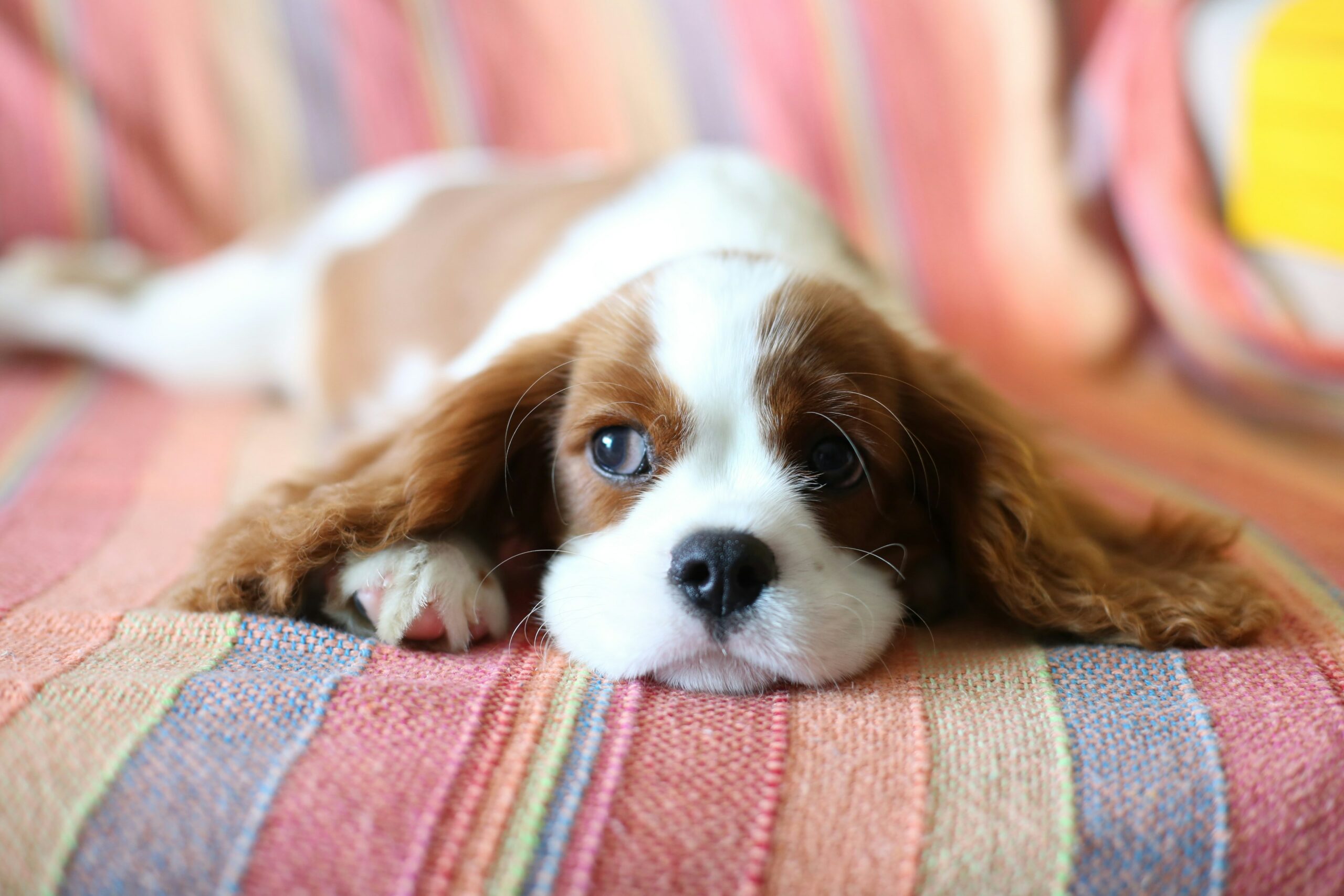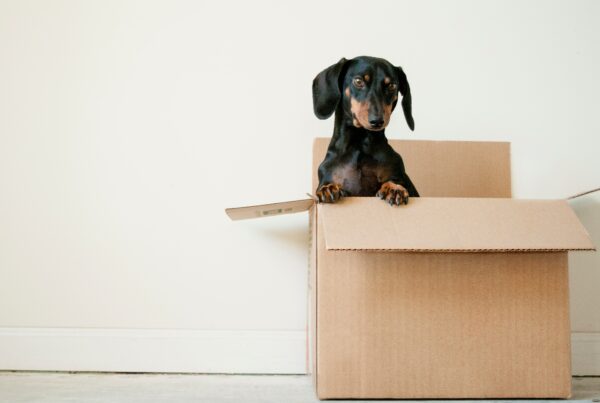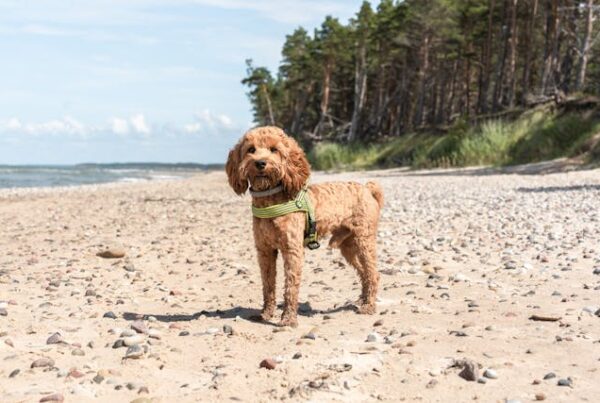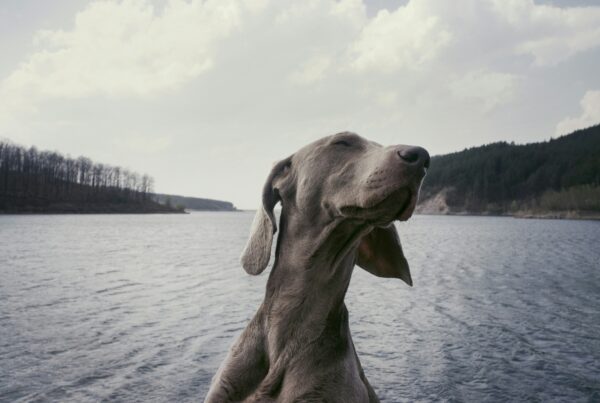The moving day is a whirlwind of boxes, goodbyes, and new beginnings. But it’s also a maze of confusion and emotions for our four-legged friends. In this guide, we explore ways to calm an anxious dog as you transition to a new home. We’ll share actionable tips to make this experience less stressful for you and your furry companion. Because when your dog is calm, moving day feels much more manageable for everyone involved. Let’s create a peaceful move together where you can successfully ease your pet’s moving anxiety.
Understanding Your Dog’s Anxiety: Signs to Watch For
Spotting when your dog feels anxious is the first step to helping them. Anxiety can show up in various ways. Let’s look at the common signs so you can spot them early. For instance, if your dog starts barking more than usual, it might be their way of saying they’re stressed. An anxious dog might walk back and forth or seem unable to settle down. That is a clear sign they’re feeling uneasy.
Are you finding your dog squeezing into tight spaces or hiding more often? That could mean they’re trying to find safety from what scares them. Recognizing these signs early on is crucial. It lets you step in and help calm your anxious dog, making the moving process smoother for both of you.
Pre-Move Preparation: Laying the Groundwork for a Smooth Transition
Preparing your dog for a move is as much about ensuring its comfort as it is about organizing logistics. Here’s how to set the stage for your furry friend’s calm and smooth transition.
- Short Visits: Bring your dog to the new home for short, enjoyable visits if it’s within reach. Let them sniff around and explore the yard, making the space more familiar.
- Photo Tour: If visiting isn’t an option, try showing pictures or videos of the new home to your dog. While they may not understand the visuals, your calm and positive tone can help ease their anxiety.
- Schedule Stick-to-itiveness: Amid boxes and packing tape, maintain your dog’s daily routine. Feed, walk, and play with them at the usual times to anchor their day.
- Quiet Packing: Start packing non-essential items early in a room your dog doesn’t frequent. This gradual approach helps minimize the disturbance to their environment.
- Scented Security: A few weeks before the move, place blankets or toys in the new home if you have access. If not, keep these items unwashed and pack them last in your current home so they retain the smell of home.
- Comfort Items: Designate a “moving day bag” for your dog, including their favorite toys, bedding, and any items that smell like you and your home. That will be one of the first things you unpack in the new space to provide immediate comfort.
These steps, taken well before moving day, can significantly reduce your dog’s anxiety by providing them a sense of familiarity and routine amidst the chaos of changing environments. It’s about reassuring them that though their surroundings may change, the love and care they rely on remain constant.
The Big Day: Strategies to Calm an Anxious Dog
Moving day is here, and it’s all hands on deck. First, you should hire apartment movers you can trust to handle your belongings. These professionals can take care of all the complex tasks while you focus on keeping your dog calm and comfortable. Here are some useful tips:
- Quiet Room: Choose a quiet room away from the moving activity. It can be a bathroom or a bedroom where your dog can stay undisturbed.
- Familiar Setup: Fill this space with their favorite bed, toys, and a piece of your clothing. The familiar scents help soothe their anxiety.
- Calming Treats: Have a stash of their favorite calming treats or chews on hand. These can help distract and calm an anxious dog.
- Comforting Sounds: Leave a radio playing softly in the room or use a white noise machine to mask the unsettling sounds of moving.
- Your Energy: Dogs pick up on our emotions. Even amidst the day’s hustle, make time to check in with your dog calmly and lovingly.
- Short Breaks: If possible, take short breaks to spend time with your dog, offering treats and gentle reassurance.
By setting up a safe space, utilizing anxiety aids, and maintaining a calm demeanor, you can help your dog navigate the chaos of moving day with less stress.
Settling In: Helping Your Dog Adjust to the New Home
Now that the move is over, it’s time to focus on your dog’s adaptation to new locations. First, let your dog discover their new home one area at a time. This approach prevents them from feeling overwhelmed by too much new space all at once. Begin with one room where they can feel secure and gradually introduce them to the rest of the house.
Additionally, consistency is key during this transition. Continue the same feeding, walking, and playtime schedules as before the move. Familiar routines offer a sense of normalcy and comfort in a new environment. Also of note is the need to create happy memories in the new home from the start. Engage in playtime or introduce a new toy in different areas to make exploration fun. Encouraging your dog to find treats hidden around the house can also turn adjusting into an enjoyable game.
Moreover, keep the environment as familiar as possible by playing sounds your dog associates with comfort. It could be a playlist of soft music you often played in your previous home or the sound of your voice through a recorded message if you need to step out briefly. Familiar auditory cues can significantly reduce feelings of loneliness and anxiety in dogs.
Spend extra quality time with your dog during the first few weeks after the move. More walks, cuddles, and one-on-one play sessions can reassure your dog that the bond you share hasn’t changed despite the change in scenery. This attention helps reduce their anxiety and strengthens your relationship, making the new house feel like home much faster.
By focusing on gradual exploration, maintaining established routines, and fostering positive associations, you’re helping your dog understand that this new place is also a safe and loving home. Patience and consistency are your best tools in making this transition as smooth as possible.
Long-Term Comfort: Ensuring Your Dog’s Continued Well-being
Transitioning to a new home is just the beginning. For your dog to thrive in their new environment, ongoing care and attention are essential. Here’s how you can ensure their well-being for the long haul.
Consistent Exercise and Play
Physical activity is crucial for your dog’s health and happiness. Beyond the routine walks, explore new hiking trails or dog parks in your area to keep their environment stimulating. Engage in interactive games like fetch or tug-of-war in your backyard or a nearby park. These activities not only keep your dog fit but also strengthen your bond.
Socialization Opportunities
Socializing isn’t just for puppies; it’s a lifelong process. Arrange playdates with dogs from your new neighborhood to help your pet make friends. Attend community pet events or consider doggy daycare once a week for social interaction. Positive encounters with other dogs and people will help your dog become more adaptable and less anxious.
Seek Professional Guidance
Even well-adjusted dogs can experience stress after a big change. If your dog exhibits prolonged signs of anxiety, such as excessive barking, chewing, or aggression, it might be time to seek help from a professional. A certified dog trainer or animal behaviorist can work with you to develop a customized plan to address your dog’s specific needs, offering strategies and training techniques to improve their behavior and emotional state.
Mental Stimulation
Mental exercise is as important as physical activity. Puzzle toys, scent games, and training sessions contribute to your dog’s cognitive health, keeping them mentally sharp and engaged. These activities can prevent boredom and deter problematic behaviors.
Dog-Friendly Home
To ensure your dog’s long-term comfort, creating a holistic home environment for your friend is key. Arrange your living space with your dog in mind, ensuring they have easy access to cozy resting spots filled with their blankets and cushions. Keep their water bowl in a consistent, reachable place, and ensure plenty of safe, chew-resistant toys for them to play with. Protect your dog from potential hazards by securing loose wires and ensuring toxic plants and harmful household items are out of reach. By tailoring your home to be as dog-friendly as possible, you create a safe and inviting environment where your dog can thrive happily over the years.
Wrap-up
Moving to a new home is a significant change for everyone, dogs included. It is essential to recognize the signs of anxiety early, prepare them before the move, ensure a calm moving day, and help them adjust afterward. Every action you take makes a difference from the pre-move preparations to post-move adjustments. Keeping routines consistent, creating a dog-friendly home, and providing long-term support will help calm an anxious dog and ensure their happiness. Remember, patience is crucial. Each dog adapts at their own pace, and yours will need your understanding and love to navigate this change.
Photo credit: https://unsplash.com/photos/brown-and-white-long-haired-small-dog-lying-on-red-and-white-textile-Ytp_K5bwa0Q?utm_content=creditShareLink&utm_medium=referral&utm_source=unsplash
Did you find this city dog content helpful? Share it with a friend or link it to social media. Enjoy short clips of silly dogs? Best dog training videos? Holistic puppy training tips? Follow us on instagram @nydognanny or on YouTube at nydognanny. Have some news you needs to get to dog and cat parents stat? Email info@newyorkdognanny.com with your article pitch.




